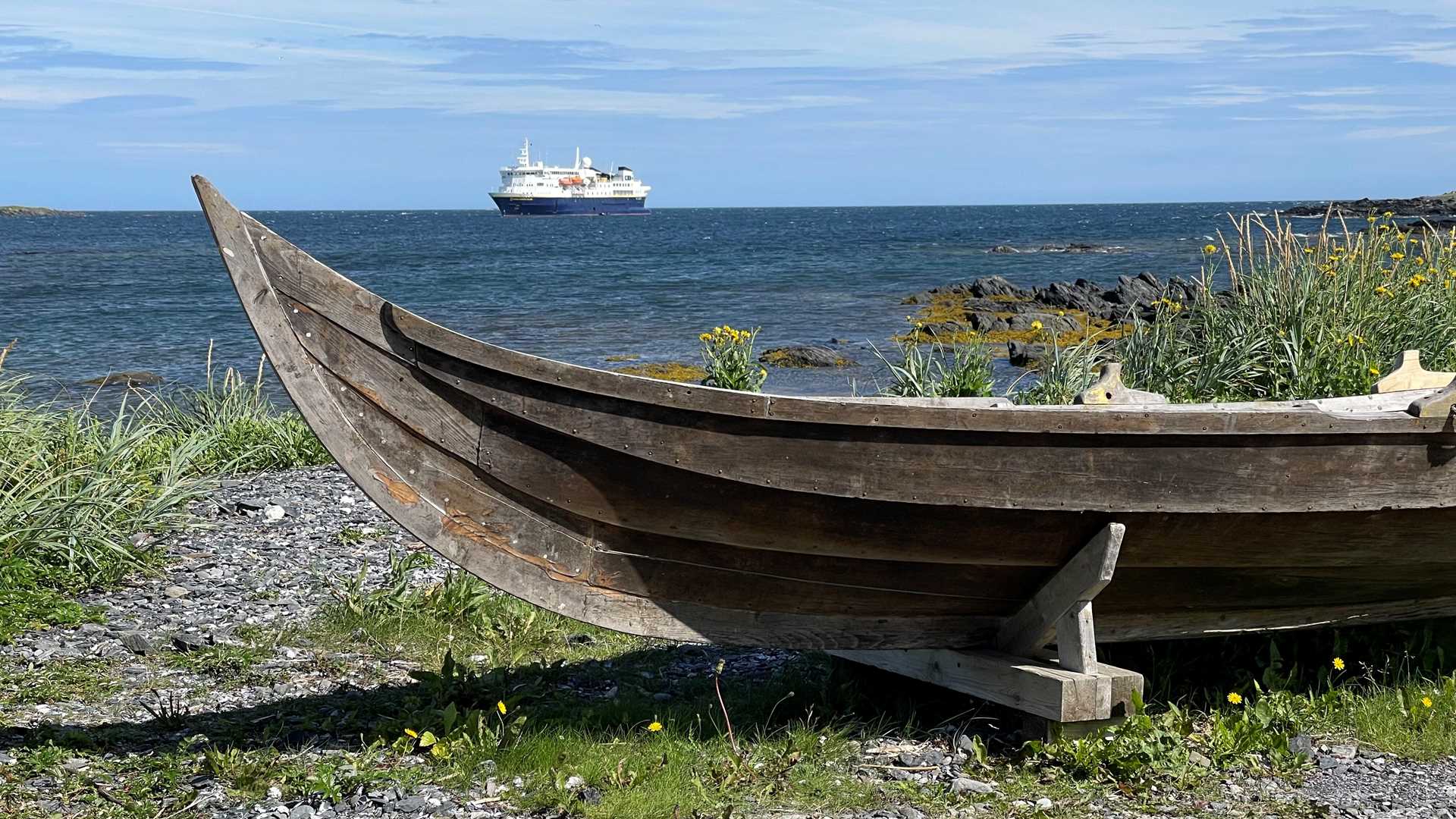We had a great time at L’Anse aux Meadows and St. Anthony today. Take a look at our photos and read the captions to learn more!
CallTest +1.800.397.3348
CallTest +1.800.397.3348

View all info
We had a great time at L’Anse aux Meadows and St. Anthony today. Take a look at our photos and read the captions to learn more!
An experienced traveler, Michael has lived on several continents, including a year spent working as a naturalist and zoologist in Galápagos and three months in Kenya conducting a study of birds of prey. He is the author o f Galápagos: A Natural Histo...
Read MoreShare Report
8/29/2022
Read
National Geographic Explorer
After days filled with dramatic mountains, fjords, ice, and wildlife, the Fabled Lands of the North expedition is drawing to a close. For our final shore excursion, we took Zodiacs to a sheltered beach at Spillars Cove, near Twillingate on Newfoundland's northeast coast. From a rocky pinnacle high above the beach, three ospreys–Mum, Dad, and Junior–watched guests disembark and navigate the cobble beach to a stairway leading to a system of trails. Some guests did a full circuit around the Spillars Cove promontory, peering down from jagged clifftops to sea stacks and sparkling water. The interior of the promontory is a sort of basin, and the restricted drainage has produced a small lake and surrounding bog. Gulls drifted overhead, and yellowlegs (wading shorebirds) patrolled the shallows in search of small invertebrate morsels. Bogs are low in nutrients, so some plants make up the shortfall by eating insects. The "pitcher" of pitcher plants contains water salted with enzymes that digest any insect that falls therein. Guests, not fans of biting insects, cheered the pitcher plants on.
8/27/2022
Read
National Geographic Explorer
During the morning hours, we started spotting rocky islands that appeared in the sea like the giant backs of whales–we had arrived in Battle Harbour. Battle Harbour is a former fishing village that relied heavily on cod fisheries, specifically on salted cod. It used to be occupied throughout the whole year, but after the crash of cod fisheries in 1992, during which around 30,000 people lost their jobs overnight, it functions as a scenic summer fishing station. Some of the fishermen who lost their jobs were taught to renovate buildings. The village was spectacularly restored, and everything we see today is as authentic as possible. After we landed, we wandered among the cute wooden buildings embedded in the carpet of fresh grass and wildflowers. We escaped the slightly damp air to get a cup of hot coffee, some fishcakes, and cheesecake with wild berries. Then we enjoyed live Labrador and Newfoundland music in the cozy loft that was filled with warm smells and the crackling sound of a fireplace. Then it was time to return to our beloved ship for lunch. After lunch, we returned to Battle Harbour for sunny afternoon wanderings. We walked around the island on the wonderful grassy hills and cliffs. Unexpectedly, we witnessed a spectacular site of humpback whales feeding in the cove below us. They showed us their magnificent ability to work together. By forcing a pod of fish into the bay and by moving their long pectoral fins, the whales pushed the fish towards the shore, trapping them between the land and their giant mouths. How incredible that we were lucky enough to witness this incredible behavior from such a close distance! What a wonderful day!